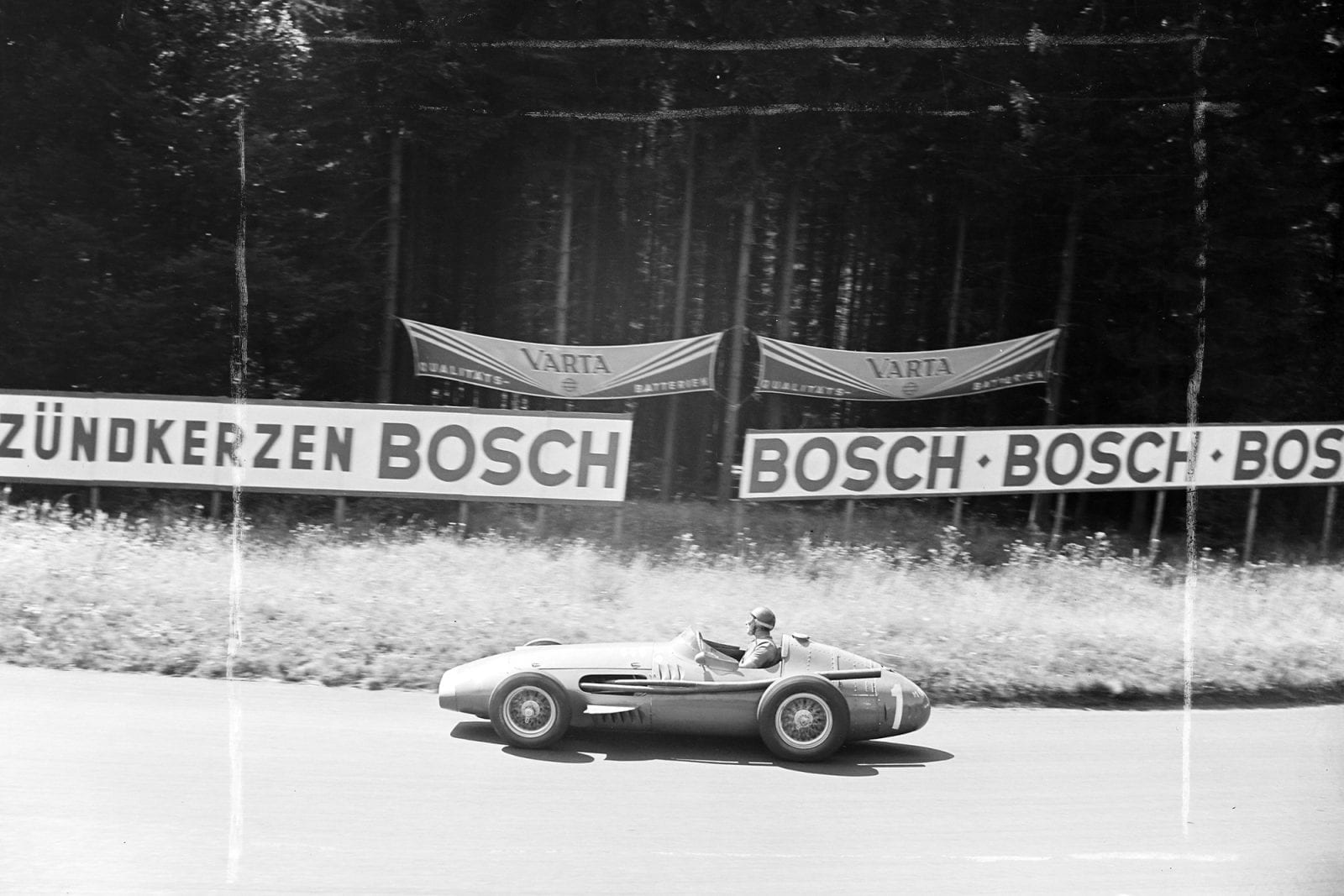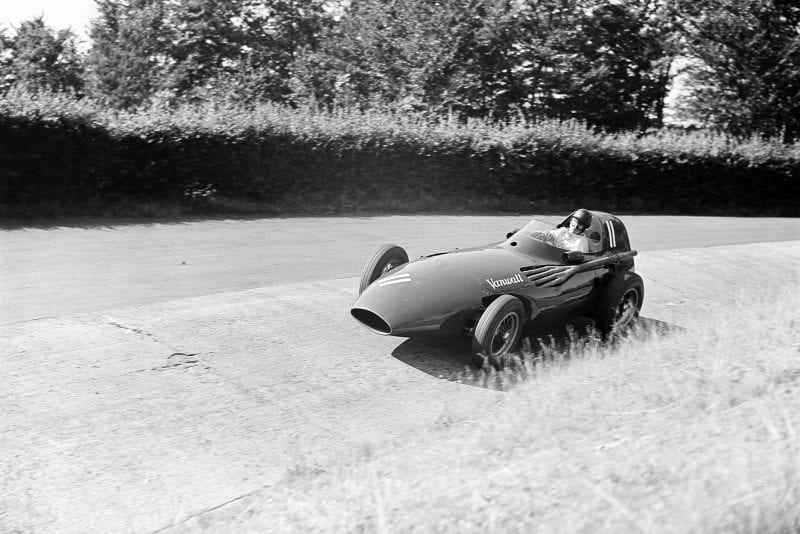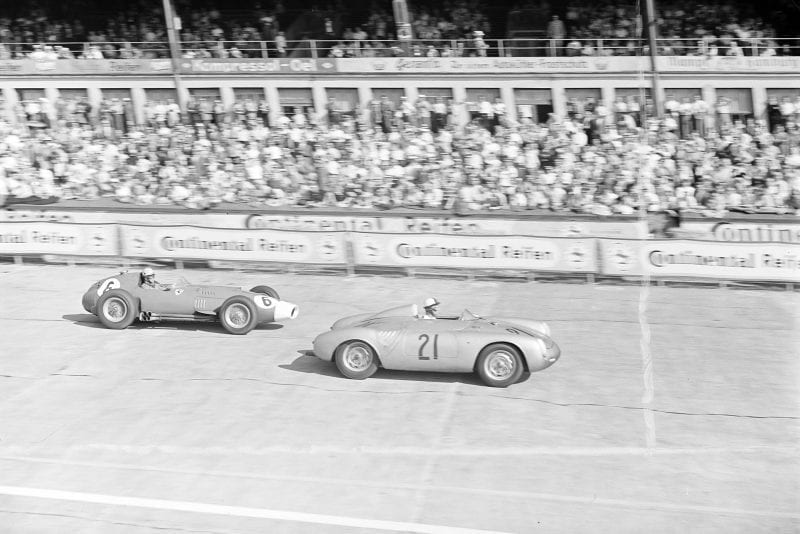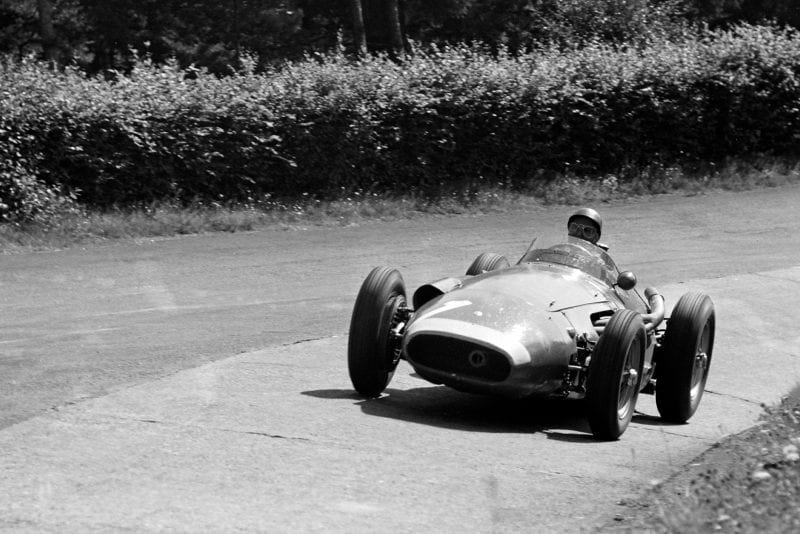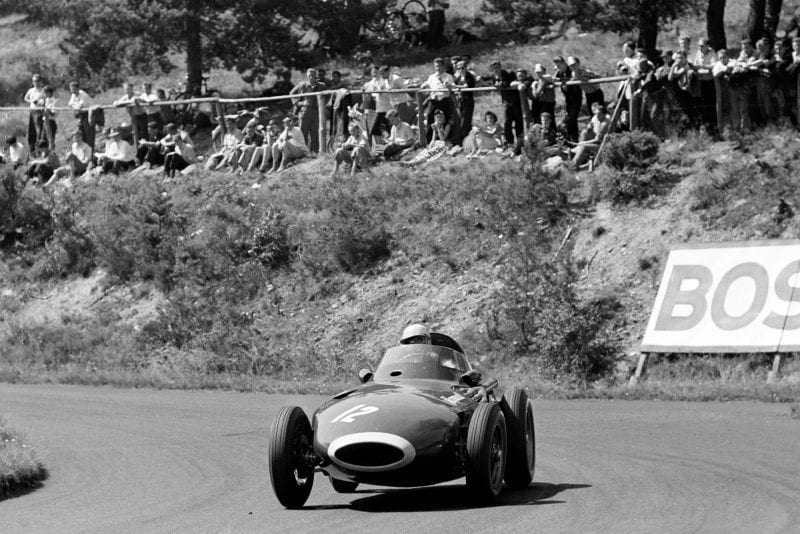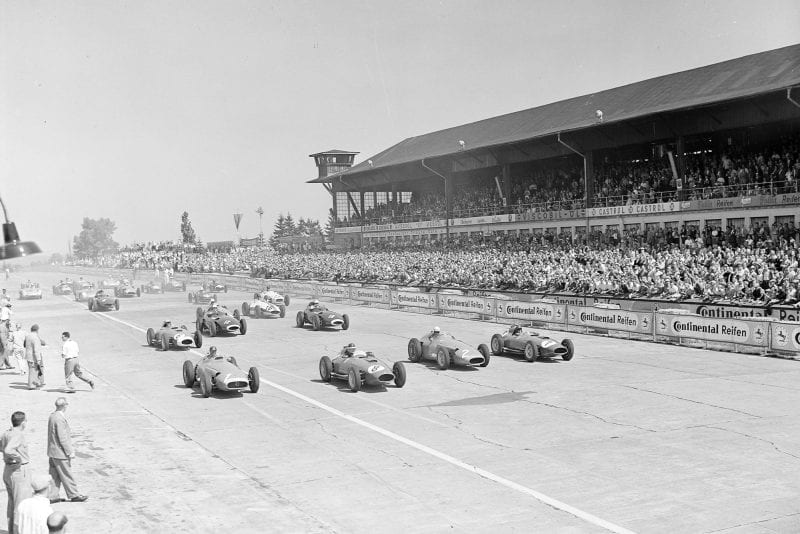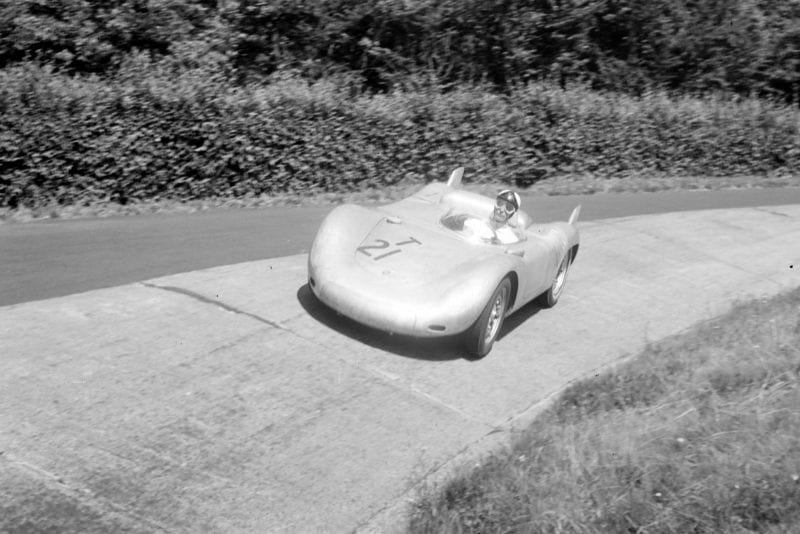Finishing lap 12 Fangio drew into the pits, got out of the car, and two mechanics took 52sec to change rear wheels and refuel, a disgustingly long time by Grand Prix standards. Fangio had arrived with 28sec lead, but slowing down and starting off again after being 52sec at the pits put him over ¾ min behind the two Lancia/Ferraris, which went by while he was stationary. Collins was credited with a new lap record of 9min 28.9sec and he and Hawthorn took turns at leading the race, passing the pits with one hand on the steering wheel and the other shading their eyes from the lowering sun.
For three laps, while his tyres were new and the tanks heavy with fuel, Fangio made no impression on the two Lancia/Ferraris, but lap 16 saw the gap reduced to 33sec and the next time round it was 25.5sec. The Ferrari pit became frantic and urged the two Englishmen to greater things but there was nothing they could do, and Fangio was smiling happily to himself as he first of all lowered the lap record to 9min 28.5sec, then to 9min 25.3sec. On lap 19 he did 9 min. 23.4sec and the gap was only 13.5sec, and Hawthorn and Collins knew their race was run, for when “the old man” gets in a record-breaking groove there is no one to stop him, especially on the Nurburgring.
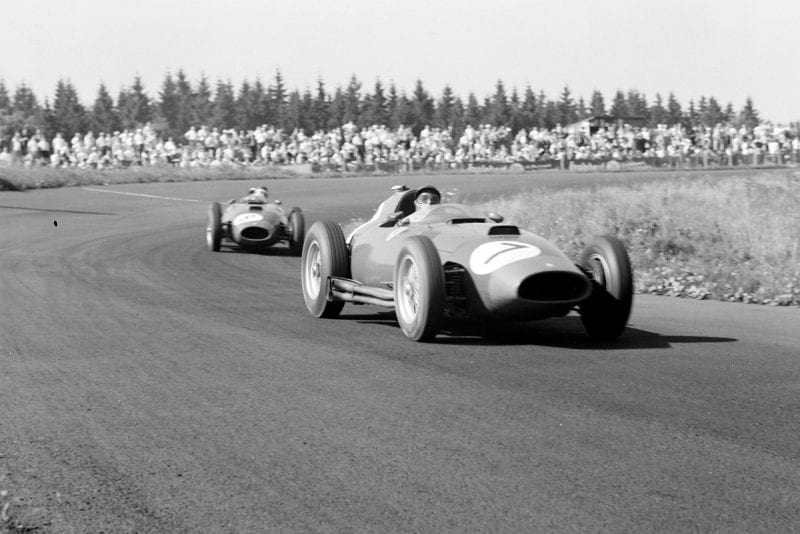
Collins leads Hawthorn as they dice for the lead
Motorsport Images
At the end of lap 20 Hawthorn led Collins over the line, both straining all they knew how, and then the crowds rose in acclamation for Fangio was right behind them, only 2 sec between himself and Hawthorn. Round the Sudkerve he was grinning contentedly at the two young boys and as Collins went into the left-handed Nordkerve Fangio went by him on the inside.
Then came the most shattering announcement of the whole race,”Fangio has just lapped in 9min 17.4 sec!” — an unbelievable record but obviously true for he had gained 11sec on Hawthorn in 14 miles. Before reaching the lowest point of the course, at Breidscheid, Hawthorn had been overtaken and with a lap and a half to go Fangio had made up for his pit stop.
“This was the Hawthorn everyone likes to watch, the never-say-die Hawthorn who will fight against overwhelming odds to the bitter end”
Once overtaken Collins relaxed and dropped right back, partly admissible as his clutch was not working, but Hawthorn refused to give up and was only 3 sec behind as Fangio started his last lap. This was the Hawthorn everyone likes to watch, the never-say-die Hawthorn who will fight against overwhelming odds to the bitter end. For that last memorable lap Hawthorn lost only a few yards on Fangio, turning in a time of 9min 24sec, but to what purpose when Fangio had done 9min 17.4sec? However, one slip by the World Champion and Hawthorn would have been back in front, But it’s because he doesn’t make such slips that Fangio is World Champion, and he led the Lancia/Ferrari over the line by barely 4 sec.
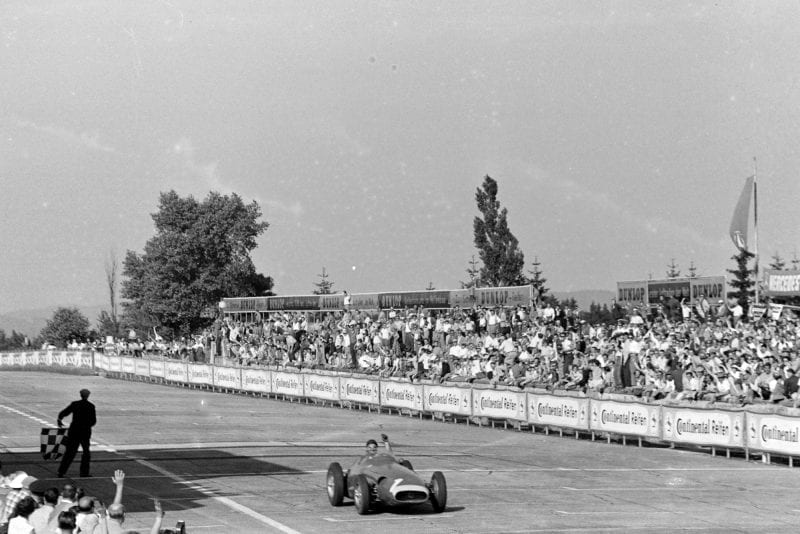
Fangio crosses the line to take arguably his greatest win
Motorsport Images
All this excitement completely overshadowed the rest of the runners, Behra being unable to catch Moss by 1 sec after his pit stop, Brooks slowing right down and being physically sick on the last lap through the buffeting from the unsuitable suspension, Moss being almost unable to get out of the car at the end, and Schell having gone through the routine Maserati pit stop in 52 sec.
Barth towed home, the first Formula II car, and Marsh spent some time at the pits replacing a broken rear wishbone and then joined in the race again.
In spite of the fantastic speed of the race, the average for the 22 laps being higher than the 1956 lap record, only one works car retired, that being the Vanwall of Lewis-Evans, while apart from Gould the only other Maserati retirement was Herrmann, who had the vertical frame tube carrying the nearside rear radius-arms break right off.
It had been a truly great race in which Fangio had surpassed himself, secured the World Championship for 1957, and put everyone in their place on the toughest Grand Prix circuit in Europe.
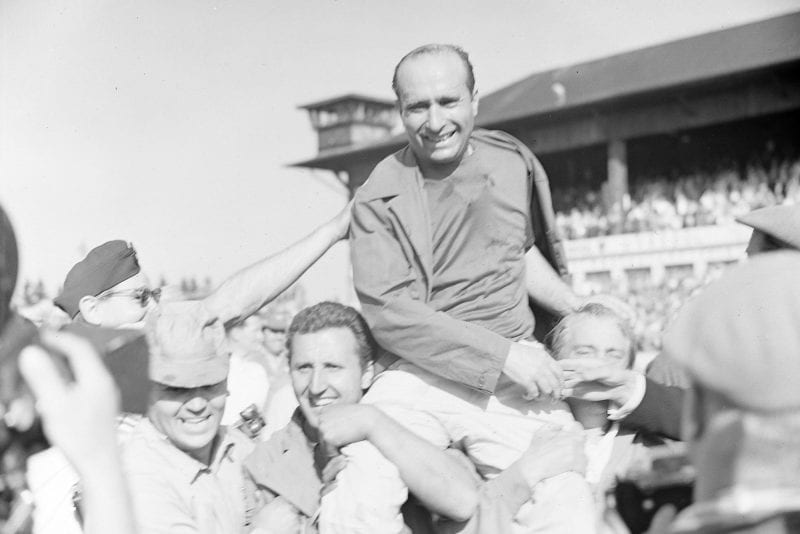
Fangio is hoisted aloft after achieving the incredible feat of winning five world championships
Motorsport Images
